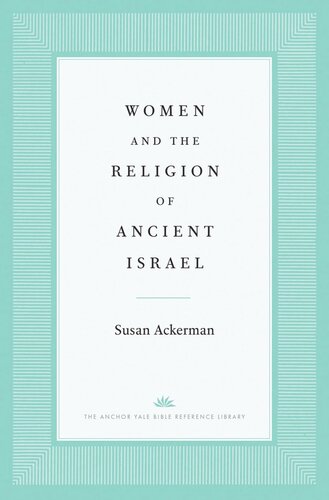

Most ebook files are in PDF format, so you can easily read them using various software such as Foxit Reader or directly on the Google Chrome browser.
Some ebook files are released by publishers in other formats such as .awz, .mobi, .epub, .fb2, etc. You may need to install specific software to read these formats on mobile/PC, such as Calibre.
Please read the tutorial at this link: https://ebookbell.com/faq
We offer FREE conversion to the popular formats you request; however, this may take some time. Therefore, right after payment, please email us, and we will try to provide the service as quickly as possible.
For some exceptional file formats or broken links (if any), please refrain from opening any disputes. Instead, email us first, and we will try to assist within a maximum of 6 hours.
EbookBell Team

4.3
58 reviewsA synthetic reconstruction of women’s religious engagement and experiences in preexilic Israel
“This monumental book examines a wealth of data from the Bible, archaeology, and ancient Near Eastern texts and iconography to provide a clear, comprehensive, and compelling analysis of women’s religious lives in preexilic times.”—Carol Meyers, Duke University
Throughout the biblical narrative, ancient Israelite religious life is dominated by male actors. When women appear, they are often seen only on the periphery: as tangential, accidental, or passive participants. However, despite their absence from the written record, they were often deeply involved in religious practice and ritual observance.
In this new volume, Susan Ackerman presents a comprehensive account of ancient Israelite women’s religious lives and experiences. She examines the various sites of their practice, including household shrines, regional sanctuaries, and national temples; the calendar of religious rituals that women observed on a weekly, monthly, and yearly basis; and their special roles in religious settings. Drawing on texts, archaeology, and material culture, and documenting the distinctions between Israelite women’s experiences and those of their male counterparts, Ackerman reconstructs an essential picture of women’s lived religion in ancient Israelite culture.